Planning an outdoor adventure trip is an exciting endeavor that requires careful preparation and consideration. Whether you’re embarking on a hiking expedition, a camping trip, or a thrilling outdoor activity, proper planning is essential to ensure a safe and enjoyable experience.
In this comprehensive guide, we will walk you through the step-by-step process on how to plan an outdoor adventure trip. From setting goals and choosing a destination to organizing your itinerary and gathering the necessary gear, we’ll cover all the essential aspects to make your trip a success.
So, let’s dive into each step and start planning your next outdoor adventure!
Setting Your Goals and Objectives

Determining the Purpose of Your Trip
When determining the purpose of your trip, it is essential to plan an outdoor adventure trip that will ensure a successful and fulfilling experience.
- Identify your goals and objectives for the trip. Determine what you hope to achieve or experience during your outdoor adventure while determining the purpose of your trip.
- Consider the activities you enjoy and the type of adventure you are seeking in order to determine the purpose. Whether you are interested in hiking, camping, water sports, or wildlife observation, your purpose will help guide your planning.
- Reflect on your personal interests and passions while determining the purpose of your trip. Are you looking to reconnect with nature, challenge yourself physically, or simply relax and unwind?
- Take into account the preferences and expectations of your travel companions while determining the purpose of your trip. Discuss what each person wants to get out of the trip to ensure everyone’s needs are met.
- Consider any special occasions or milestones that may influence the purpose of your trip while determining the purpose. It could be a birthday celebration, a graduation trip, or a couple’s getaway.
- Think about the desired outcomes and benefits of your adventure while determining the purpose of your trip. Do you want to learn new skills, improve your fitness, or simply have fun and create lasting memories?
Determining the purpose of your trip while planning accordingly will help you select activities, destinations, and accommodations that align with your goals and expectations.
Defining Your Adventure Goals
When planning an outdoor adventure trip, it is crucial to define your adventure goals. This will help you have a clear understanding of what you want to achieve and tailor your trip accordingly.
Defining your adventure goals involves identifying the specific experiences, activities, or challenges you want to pursue during your trip.
- Determine the purpose of your trip: Are you looking for a thrilling adrenaline rush, a peaceful nature retreat, or a chance to learn new skills?
- Set specific goals: Do you want to climb a particular mountain, complete a long-distance hike, or learn to surf?
- Consider your interests: Are you passionate about wildlife photography, rock climbing, or water sports?
- Assess your skill level: Are you a beginner looking for introductory experiences or an experienced adventurer seeking more advanced challenges?
- Clarify your expectations: Do you want to push your limits, connect with nature, or simply have a fun and memorable experience?
By defining your adventure goals, you can narrow down the destinations, activities, and resources that will enable you to achieve them. This will ensure that your outdoor adventure trip aligns with your personal aspirations and maximizes your enjoyment and fulfillment.
Remember to stay flexible and open to new experiences along the way, as they may enhance your adventure even more.
Choosing the Perfect Destination
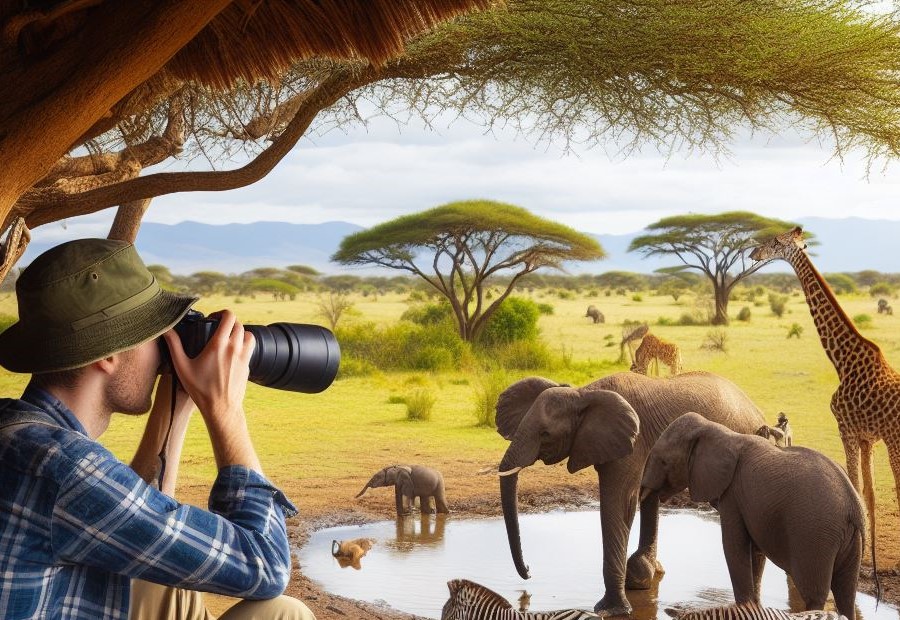
Researching Different Outdoor Adventure Locations
When planning an outdoor adventure trip, it is crucial to spend time researching different outdoor adventure locations to ensure you choose the perfect destination.
- Start by gathering information about various outdoor adventure locations, such as national parks, hiking trails, or camping spots. Websites, guidebooks, and online forums can be valuable resources.
- Consider factors such as the type of activities available, the level of difficulty, and the scenic beauty of each location. Some may offer opportunities for hiking, rock climbing, kayaking, or wildlife spotting.
- Take into account the season and weather conditions. Certain locations may be more suitable for summer activities, while others may offer winter sports like skiing or snowboarding.
- Accessibility is another important consideration. Choose destinations that are easily reachable, either by car, public transportation, or a short hiking trail.
- Read reviews and gather feedback from fellow outdoor enthusiasts who have visited these locations. Their experiences and recommendations can provide valuable insights.
- Lastly, compare the costs associated with different locations, including entrance fees, camping permits, and any additional gear or equipment you may need.
By thoroughly researching different outdoor adventure locations, you can make an informed decision and select a destination that aligns with your interests, abilities, and preferences. This will significantly enhance your overall outdoor adventure experience.
Considering Factors such as Season, Weather, and Accessibility
When planning an outdoor adventure trip, it is important to carefully consider factors such as season, weather, and accessibility. These key considerations can greatly impact the success and enjoyment of your trip. Here are some important points to keep in mind:
- Considering Factors such as Season: Take into account the time of year you plan to embark on your adventure. Consider the climate and weather conditions during that season.
- Researching Weather: Research the typical weather patterns and conditions for the area you will be visiting. Keep in mind that weather can be unpredictable, so it’s important to be prepared for various conditions. Pack appropriate clothing and gear, such as rain gear or extra layers, to ensure your comfort and safety.
- Assessing Accessibility: Assess the accessibility of your chosen destination. Consider the transportation options available to reach the area and how easy it will be to navigate once you’re there. If you have specific mobility requirements, ensure that the location is suitable and accessible for your needs.
Pro-tip: Check weather forecasts leading up to your trip and stay up to date during your adventure. By considering factors such as season, weather, and accessibility, you can be well-prepared and make any necessary adjustments to your plans based on the current conditions.
Planning the Itinerary
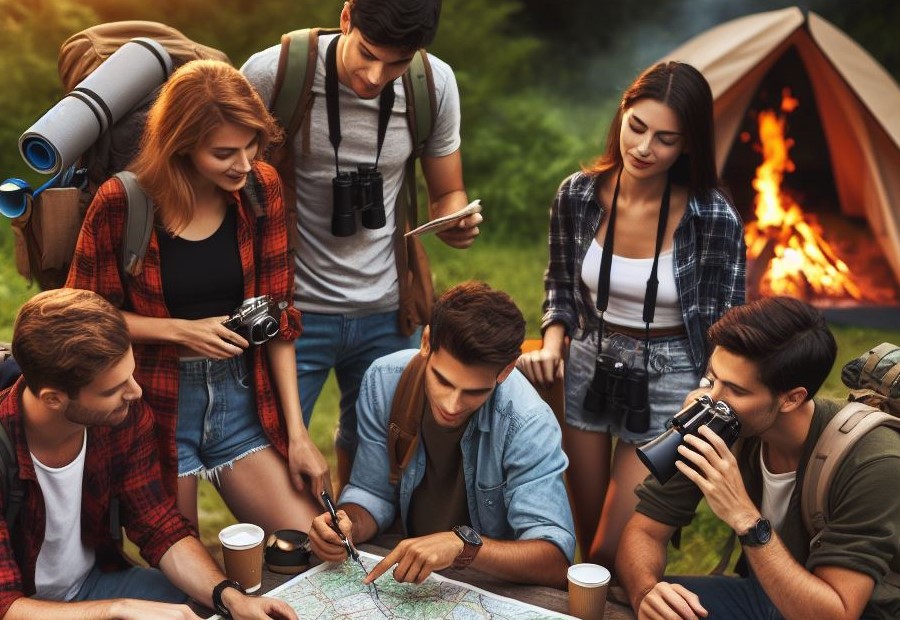
Deciding on the Duration of the Trip
When planning an outdoor adventure trip, one important factor to consider is deciding on the duration of the trip. This will depend on various factors such as personal preferences, available time, and the nature of the adventure.
- Assess your availability: Consider how much time you can dedicate to the trip, taking into account work schedules, family commitments, and other obligations.
- Understand the destination: Research the location and activities you plan to engage in, as this will help you determine the ideal duration. Some adventures may require more time for exploration and experiencing all the highlights.
- Consider the difficulty level: If your adventure involves physically demanding activities or covers long distances, you may need more time to complete it.
- Allow for relaxation and rest: It’s essential to factor in downtime for rest and relaxation during your trip. This can help prevent fatigue and ensure you have an enjoyable experience.
- Be realistic: Consider your fitness level and past experience with similar activities. Setting a duration that is realistic and achievable will help you enjoy the adventure without pushing yourself too hard.
By carefully considering these factors, you can make an informed decision on the duration of your outdoor adventure trip, ensuring you have enough time to fully immerse yourself in the experience.
Creating a Day-by-day Schedule
When planning an outdoor adventure trip, creating a day-by-day schedule is crucial to ensure a well-organized and enjoyable experience. Here are the steps to follow:
- Start by determining the total duration of your trip. This will help you allocate enough time for each activity and ensure a balanced itinerary.
- Research the attractions, sights, and activities available at your chosen destination. Make a list of the ones you want to experience and prioritize them based on your interests and preferences.
- Divide your trip into individual days and assign specific activities to each day. Consider the time required for each activity and factor in travel time between locations.
- Take into account the opening and closing hours of attractions, as well as any time-specific events or activities that may be available. This will help you plan your day accordingly.
- Allow for flexibility in your schedule to account for unforeseen delays or changes in weather conditions. It’s essential to have backup options or alternative activities for each day.
- Ensure that your schedule allows for rest and relaxation. Outdoor adventures can be physically demanding, so incorporating downtime will help you recharge and enjoy the experience fully.
- Stay organized by documenting your day-by-day schedule in a planner, using digital tools, or creating a physical itinerary. Include important details such as addresses, contact information, and reservation confirmation numbers.
By following these steps, you can create a well-structured day-by-day schedule that maximizes your outdoor adventure trip and ensures a seamless and memorable experience.
Gathering Essential Gear and Equipment
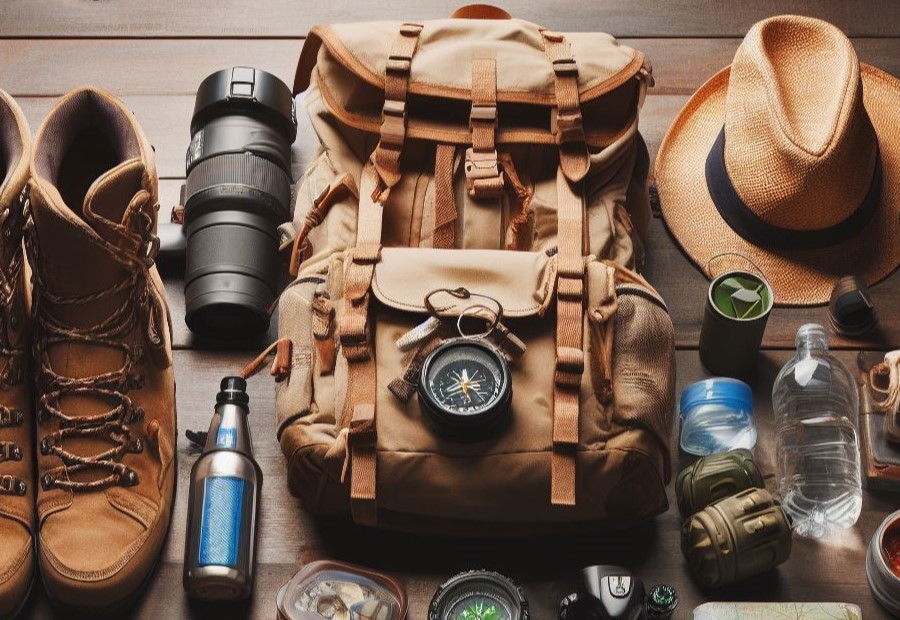
Assessing and Acquiring the Necessary Gear
When planning an outdoor adventure trip, assessing and acquiring the necessary gear is crucial to ensure a safe and enjoyable experience. Here are the steps to take:
- Make a checklist of essential gear based on your specific activities and the duration of your trip. This may include camping equipment, hiking gear, cooking utensils, and clothing suitable for the weather conditions.
- Research and compare different brands and models of gear to find the most reliable and durable options. Look for gear that is suitable for your skill level and budget.
- Read reviews and seek recommendations from experienced outdoor enthusiasts to gather insights about the performance and quality of the gear you are considering.
- Purchase the necessary gear from trusted retailers or online platforms. Take advantage of sales or discounts to save money.
- Inspect and test your gear before the trip to ensure everything is in working order. This includes assessing and acquiring the necessary gear, setting up tents, checking hiking boots for proper fit, and testing camp stoves or other cooking equipment.
- Organize your gear efficiently, using compartments or packing cubes to maximize space and accessibility. Label your gear for easy identification.
- Consider renting or borrowing certain gear if you don’t anticipate using it frequently, as this can save you money and storage space.
Pro-tip: Prioritize quality and functionality when choosing gear to avoid any inconveniences during your outdoor adventure. Invest in assessing and acquiring the necessary gear that is durable, lightweight, and well-suited for your specific activities.
Packing and Organizing Your Equipment
When it comes to packing and organizing your equipment for an outdoor adventure trip, it’s important to be prepared and efficient. Here are some steps to follow:
- Assessing your needs: Make a list of all the necessary items you will need for the trip, such as camping gear, cooking utensils, hiking equipment, and clothing.
- Acquiring the essentials: Gather all the required gear, ensuring that you have everything on your list. This may include a tent, sleeping bags, cooking stove, backpack, and any other specific items based on the nature of your adventure.
- Organizing your equipment: Arrange your gear in an orderly manner to make it easy to access when needed. Use storage containers, labeled bags, or compartments within your backpack to keep things organized.
- Packing efficiently: Place heavier items on the bottom of your backpack, distributing weight evenly. Pack clothes in separate waterproof bags to keep them dry. Utilize compression sacks to save space.
- Securing fragile items: Protect delicate equipment, such as cameras or electronic devices, by using padded cases or protective sleeves.
- Checking for completeness: Before leaving, double-check that you have packed all the essential items and that nothing has been left behind.
By following these steps, you can ensure that your equipment is well-packed and organized, allowing for a smoother and more enjoyable outdoor adventure trip.
Ensuring Proper Safety and Health Measures
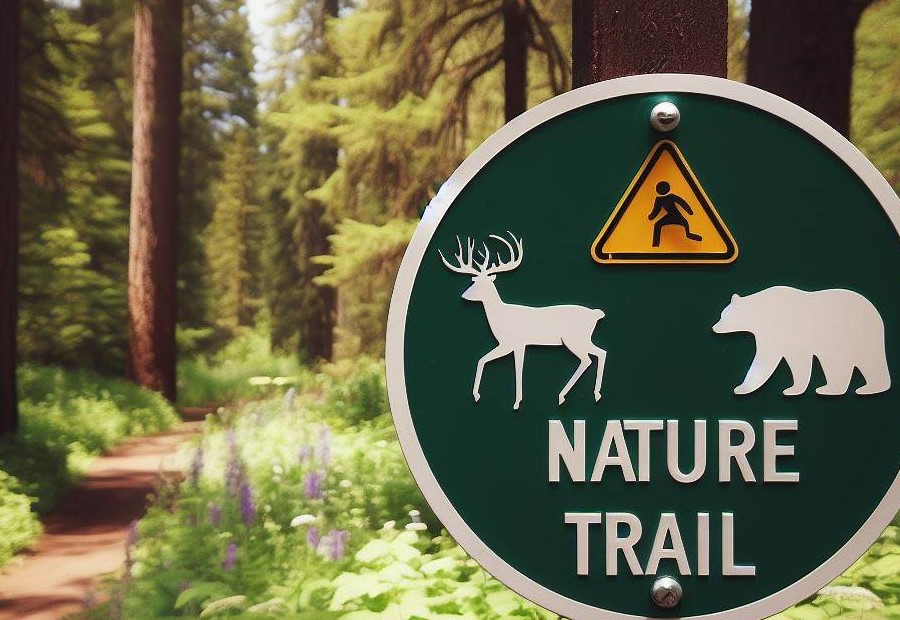
Conducting a Risk Assessment
When planning an outdoor adventure trip, conducting a risk assessment is crucial for ensuring the safety of yourself and your group. Here are steps to conduct a comprehensive risk assessment:
- Evaluate the terrain: Assess the difficulty level and potential hazards of the terrain you will be navigating, such as steep slopes, rocky paths, or dense vegetation.
- Identify natural dangers: Take into consideration any natural dangers that may be present, such as wildlife encounters, extreme weather conditions, or water crossings.
- Assess equipment and gear: Evaluate the condition and suitability of your equipment and gear, including camping gear, footwear, and clothing. Ensure that everything is in good working order and appropriate for the environment you will be in.
- Consider the experience and abilities of the participants: Take into account the physical fitness, experience level, and skills of the individuals in your group. Ensure that everyone is capable of handling the challenges that may arise during the trip.
- Plan for emergencies: Develop an emergency plan that includes procedures for communicating with emergency services, locating medical facilities, and handling potential injuries or crises. Assign roles and responsibilities to each member of the group.
By conducting a thorough risk assessment, you can identify potential hazards and take appropriate measures to minimize risks and ensure a safe and enjoyable outdoor adventure trip.
Checking for Permits and Regulations
When planning an outdoor adventure trip, checking for permits and regulations is important to ensure a safe and legal experience.
- Research: Look into the specific area or destination where you plan to go. Find out if there are any permits required for entry or specific activities. This information can usually be found on the official website of the park or reserve.
- Contact Authorities: If you have any doubts or questions about permits or regulations, reach out to the park authorities or local governing bodies. They will be able to provide you with accurate and up-to-date information.
- Apply for Permits: If permits and regulations are required, make sure to apply for them well in advance. Some popular destinations may have limited spots available, so it’s important to secure your permit early.
- Follow Guidelines: Once you have obtained the necessary permits, familiarize yourself with the regulations and guidelines set by the park or governing body. This may include restrictions on campfires, waste disposal, wildlife interactions, and more. Adhere to these rules to ensure the preservation of the environment and the safety of yourself and others.
- Be Prepared for Inspections: During your trip, be prepared for park rangers or authorities to conduct inspections and ask for your permits. Keep them easily accessible and readily available to avoid any complications.
Checking for permits and regulations is an essential part of responsible outdoor adventure planning. By following these steps and being mindful of the rules, you can have a safe and enjoyable experience while preserving the natural beauty of the environment.
Preparing a First Aid Kit
When planning an outdoor adventure trip, it is crucial to prepare a first aid kit to ensure the safety and well-being of everyone involved. Here are the steps to take when preparing a first aid kit:
- Assess your needs: Consider the activities you will be participating in and the potential risks involved. This will help determine the items you should include in your kit.
- Basic supplies: Every first aid kit should contain essentials such as adhesive bandages, sterile gauze pads, adhesive tape, antiseptic wipes, and scissors.
- Medications: Include over-the-counter medications such as pain relievers, antihistamines, and antacids. If anyone in your group has specific medical conditions, make sure to pack any necessary prescription medications.
- Emergency items: It’s important to have emergency supplies like a CPR mask, thermal blanket, emergency whistle, and a flashlight with extra batteries.
- Personal needs: Don’t forget to include personal items such as any necessary personal medications, insect repellent, sunblock, and any specific items needed for individual health needs.
Remember to regularly check your first aid kit to ensure that all items are up-to-date and replenished as needed. Additionally, familiarize yourself with basic first aid procedures and make sure someone in your group has knowledge of how to use the items in the kit.
Being prepared with a well-stocked first aid kit can provide peace of mind and ensure that you are ready to handle any minor injuries or emergencies that may arise during your outdoor adventure trip.
Arranging Accommodation and Transportation

Booking Campsites or Lodges
When planning your outdoor adventure trip, it’s important to make the necessary arrangements for booking campsites or lodges. This crucial step ensures a comfortable and convenient stay during your journey.
Here are some key factors to consider when booking campsites or lodges:
- Do thorough research on various campsites or lodges in your desired destination. Look for options that perfectly align with your preferences, including location, amenities, and facilities.
- Take into account the number of people in your group and the size of the campsite or lodge you’ll need. Make sure there’s ample space to accommodate everyone comfortably.
- Check for the availability of campsites or lodges during your preferred travel dates. Keep in mind that popular destinations and peak seasons may have limited availability, so it’s wise to book in advance.
- Seek out reviews or recommendations from fellow travelers to get insights into the quality and experiences offered by different campsites or lodges.
- Evaluate the amenities and facilities provided, such as fire pits, picnic tables, toilets, showers, and cooking areas. Opt for campsites or lodges that offer the amenities necessary for a comfortable stay.
- Consider any specific requirements or preferences you may have, such as accessibility for individuals with disabilities or options that are pet-friendly.
By carefully considering these factors, you’ll be able to make well-informed decisions and successfully book campsites or lodges that will enhance your outdoor adventure trip.
Planning for Transportation to and within the Destination
When planning for transportation to and within the destination for your outdoor adventure trip, there are several important factors to consider:
- Distance: Determine the distance you will need to travel to reach your destination. This will help you plan the appropriate mode of transportation and estimate travel time.
- Mode of transportation: Choose the mode of transportation that best suits your needs and preferences for planning for transportation to and within the destination. Options may include car, public transportation, or air travel.
- Accessibility: Consider the accessibility of your destination and any outdoor activities you plan to engage in when planning for transportation to and within the destination. Ensure that your chosen mode of transportation can accommodate the terrain and requirements of your adventure.
- Cost: Evaluate the cost of transportation options for planning for transportation to and within the destination and choose one that fits within your budget. Consider factors such as fuel costs, ticket prices, and any additional fees or expenses.
- Availability: Check the availability of transportation options for planning for transportation to and within the destination and make sure they align with your desired travel dates and schedule.
By considering these factors, you can effectively plan for transportation to and within your outdoor adventure destination, ensuring a smooth and enjoyable trip.
Considering Environmental Impact and Leave No Trace Principles
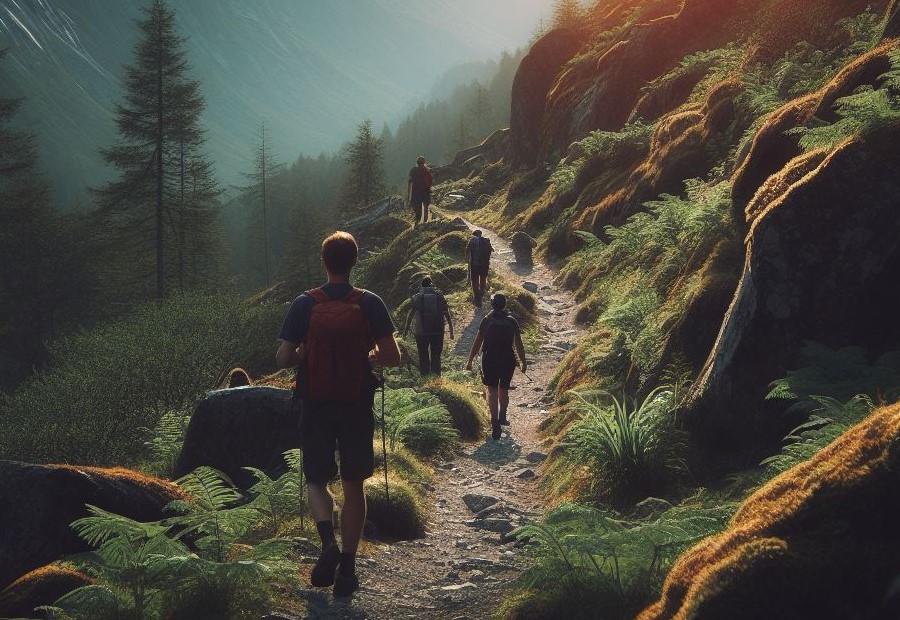
Understanding and Respecting the Natural Environment
Understanding and respecting the natural environment is crucial when planning an outdoor adventure trip. By doing so, we can ensure the preservation and sustainability of the places we visit.
- Minimizing our impact: It is essential to minimize our impact on the natural environment. This includes avoiding littering, sticking to designated trails, and refraining from disturbing wildlife or damaging vegetation.
- Leave No Trace: By adhering to the principles of Leave No Trace, we can guarantee that we leave the environment as we found it. This means packing out all trash, being mindful of where we go to the bathroom, and leaving natural objects and historical artifacts untouched.
- Educating ourselves: Understanding the ecosystems and habitats we will be visiting is vital. This knowledge enables us to appreciate and respect the delicate balance of nature and make decisions that protect the environment.
- Supporting conservation efforts: We can contribute to the preservation of natural environments by supporting local conservation organizations or initiatives. This may involve participating in volunteer activities or making donations to help protect and restore the ecosystems we enjoy.
- Spreading awareness: Sharing our experiences and knowledge with others can help raise awareness about the significance of understanding and respecting the natural environment. By advocating for responsible outdoor practices, we can encourage others to do the same.
By understanding and respecting the natural environment, we can ensure that future generations can also enjoy the beauty and wonders of our natural world.
Anticipating and Preparing for Emergencies
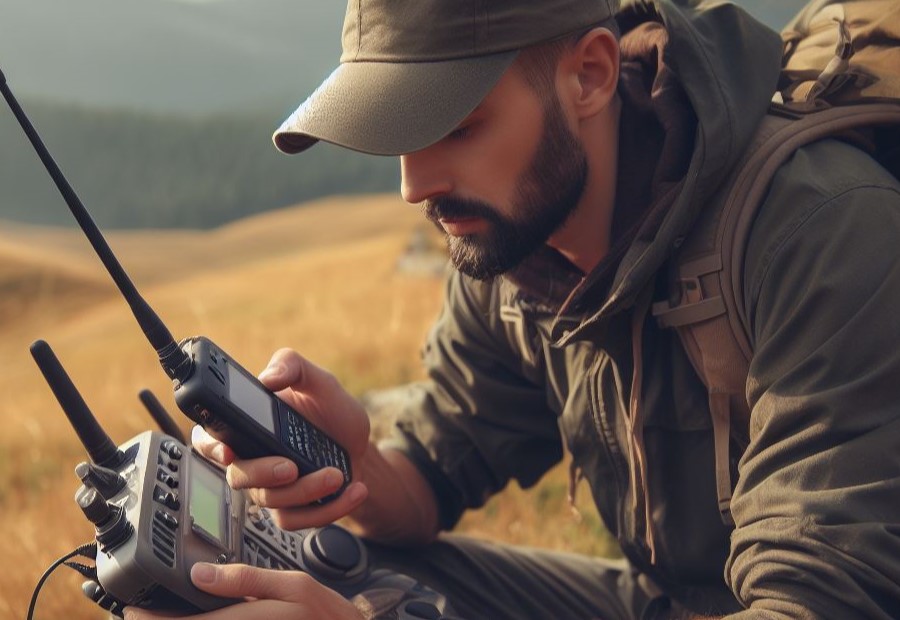
Creating an Emergency Plan
When planning for an outdoor adventure trip, it is crucial to create an emergency plan. This step ensures that you are well-prepared for any unexpected situations and can effectively handle emergencies. Follow these steps to create your emergency plan:
- Assess potential risks and hazards: Take the time to identify the potential risks and hazards you may encounter during your trip. These can include extreme weather conditions, encounters with wildlife, or accidents.
- Research emergency services and resources: Familiarize yourself with the emergency services and resources available in the area where you will be traveling. This includes obtaining contact information for local emergency services, hospitals, and search and rescue teams.
- Create an emergency contact list: Compile a list of essential contact numbers, including emergency contact numbers for friends or family members who will not be joining you on the trip. Ensure that everyone in your group receives a copy of this list.
- Develop a communication plan: Plan how your group will communicate in case you get separated. Establish a designated meeting point and determine the method of communication to be used. Make sure everyone is aware of how and when to use emergency communication devices, such as satellite phones or radios.
- Designate a group leader: Assign a responsible and knowledgeable person as the designated leader in case of emergencies. This person should have proper first aid training and a clear understanding of the group’s emergency procedures.
- Prepare a first aid kit: Assemble a comprehensive first aid kit that includes all the necessary supplies to treat common injuries or ailments that may occur during your trip. Ensure that the kit is easily accessible, and all group members are aware of its contents and how to use them.
- Review and practice emergency procedures: Before the trip, discuss the emergency procedures with your group and consider practicing them if possible. This will ensure that everyone is familiar with what to do in case of an emergency.
By creating an emergency plan and following these steps, you can prioritize the safety and well-being of yourself and your group during your outdoor adventure trip.
Communicating Your Itinerary with Friends or Family
When planning an outdoor adventure trip, it is important to naturally incorporate keywords like “Communicating your itinerary with friends or family“. This will not only ensure their awareness of your plans but will also address safety concerns.
- Inform your friends or family about the specific dates of your trip, including both the arrival and departure times, as a part of your itinerary communication.
- Share the location or destinations you plan to visit during your adventure trip to keep them well-informed.
- Provide all the necessary details about the activities or excursions you intend to participate in during the trip, ensuring open communication.
- Share important contact information, such as the phone number and address of your accommodations, with your friends or family.
By incorporating these keywords naturally and communicating your itinerary with friends or family:
- They can stay informed about your whereabouts in case of an emergency or if they need to reach you.
- They can provide assistance or support if needed during your trip, based on the information shared.
- Your friends or family can have peace of mind knowing your plans and being able to stay connected with you during your adventure.
- They can offer helpful recommendations or suggestions based on their own knowledge or experiences.
Remember to keep your friends or family updated if any changes occur to your itinerary or if there are delays in your travel plans. This open communication is essential for a safe and enjoyable outdoor adventure trip.
Frequently Asked Questions
1. How do I plan an outdoor adventure trip?
Planning an outdoor adventure trip involves several steps:
- Research and select a destination that inspires you, considering factors like border restrictions, weather conditions, and your preferences.
- Check the rules and regulations, camping rules, stay limits, and parking availability at your desired location.
- Create an itinerary by making a day planner, including rest days, travel time, trail difficulty, and special notes about the places you’ll visit.
- Inform your loved ones or someone about your trip details and expected duration for safety purposes.
- Plan your meals and pack enough food and snacks, considering water availability and choose meals that are not too water-intensive.
- Gather all the necessary gear, including cooking tools, shelter, navigation tools, appropriate clothing, and a first aid kit.
- Consider sustainability by following leave no trace ethics, staying on designated footpaths, and minimizing disruption to the natural environment.
- Pack light to avoid discomfort and backaches during your trip.
- Be flexible and prepared for unexpected situations, and remember to embrace the discomfort and spirit of being in the wild.
2. What are some important factors to consider when selecting a destination for an outdoor adventure trip?
When selecting a destination for your outdoor adventure trip, consider the following factors:
- Border restrictions: Check if you can leave the country and if there are any specific entry requirements.
- Weather conditions: Consider the climate and seasonal variations to plan your trip accordingly.
- Rules and regulations: Research the specific rules and regulations for the area you plan to visit.
- Camping rules and stay limits: Check if there are any restrictions on camping and the maximum duration of stay.
- Parking availability: Ensure that the location has adequate parking facilities for your vehicle.
- Price check: Consider the cost of permits, accommodations, and other expenses associated with the destination.
- Available resources: Check the availability of essential resources like water, food, and emergency services.
3. How important is it to inform someone about my outdoor adventure trip?
Informing someone about your outdoor adventure trip is essential for safety purposes. If something unexpected happens, having someone aware of your whereabouts can help rescue teams or authorities locate you more quickly.
This is especially important for solo travelers. Make sure to share your trip details, including the destination, itinerary, and expected duration, with a trusted friend, family member, or emergency contact.
4. How can I ensure minimal impact on the natural environment during my outdoor adventure trip?
To minimize your impact on the natural environment during your outdoor adventure trip, follow these guidelines:
- Follow leave no trace ethics by packing out all trash and leaving the area as you found it.
- Stay on designated footpaths and trails to avoid damaging delicate ecosystems.
- Respect wildlife and observe them from a safe distance, never feeding or approaching them.
- Use camping areas and facilities provided, avoiding creating new campsites.
- Conserve water by using it sparingly and following any specific guidelines at the location.
5. What are some tips for packing and preparing meals for an outdoor adventure trip?
When preparing meals for your outdoor adventure trip, consider the following tips:
- Plan your meals in advance and pack enough food and snacks to sustain yourself during the trip.
- Choose meals that are not too water-intensive to conserve water.
- Bring a portable solar charger to recharge your electronic devices.
- Consider lightweight and compact cooking tools to reduce the weight of your backpack.
- Pack a first aid kit with essential supplies for any injuries or emergencies.
- Include dessert as a treat to boost morale during your outdoor adventure.
6. How can I ensure a comfortable and enjoyable outdoor adventure trip?
To have a comfortable and enjoyable outdoor adventure trip, consider the following tips:
- Research and plan your trip extensively, considering factors like trail conditions, accommodations, and transportation logistics.
- Gather all the necessary gear, including appropriate clothing, navigation tools, and a comfortable sleeping arrangement like a blow-up mattress.
- Try to schedule your trip during the off-season or weekdays to avoid crowds.
- Be open to trying new things and stepping out of your comfort zone to fully embrace the adventure.
- Stay flexible and be prepared to adapt your plans if unexpected situations arise.
- Remember to enjoy the experience and appreciate the beauty of nature, even if it means sacrificing some creature comforts.

